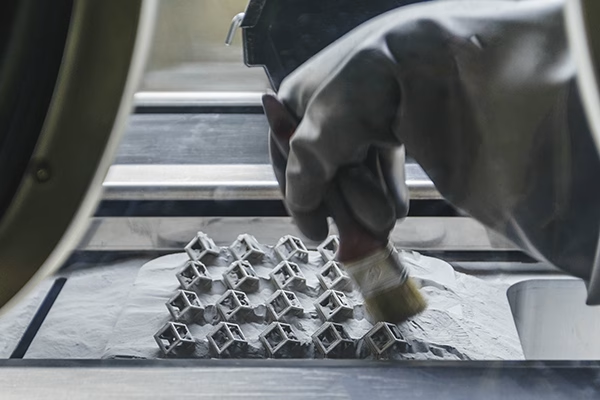Rapid prototyping has revolutionized product development. Through its different manufacturing options can help product designers and developers to speed up the process. One of the biggest challenges they are facing is how fast they can make the process. That is where 3D printing comes in.
When 3D printing technology was first developed, it was meant for rapid prototyping. The terms 3D printing and rapid prototyping were interchangeable. As years passed, 3D printing has developed end-use production capabilities, but its role in rapid prototyping did not waiver.
While 3D printing has expanded beyond rapid prototyping, it has increased its flexibility and cost-effectiveness. This means that the technique has become more practical and serves smaller businesses instead of the big players. Thanks to 3D printing, they can do short runs for a dozen or less, thereby creating scale models that they can test.

Metal 3d printing products
Cheaper and Better
With 3D printing, what has been limited in prototyping before can now create prototypes as it is cheaper. Take the use of 3D printing services in building house scale models from blueprints, for example. Before, building a scale model of a building because it was expensive. Usually, it is common only for large buildings and projects.
The alternative would be to painstakingly create a model that is often too flimsy and has limited accuracy. With 3D printing services, architects can have a scale model printed seamlessly within a fraction of the time it takes to create such models. This model is accurate because it is based on the actual plans of the building.
3D Printing and Rapid Prototyping
For product developers on a budget, 3D printing is a perfect alternative because they can create a well-made prototype at a lesser cost than they would have in the past. It can print a variety of designs and materials with the same look, feel, and form as the final product would.
These models can be used to show potential buyers and other stakeholders what the finished part would look like. Designers and engineers can use this prototype to evaluate the items and based on the results, modify the design.
Impact on the Manufacturing Industry
The role of 3D printing continues to evolve in the manufacturing sector. Many companies have adopted the technology, and its employees upgraded their skills to adapt. Although the process is not suited for volume manufacturing, once a prototype is made through the process, the company can move to a faster production process.
3D printing is also ideal for creating molds for rapid tooling. It does not directly address rapid prototyping, but it is still part of the production. When you look at the transformation in manufacturing, you will see that it now goes beyond the basics. It is also about other things like inventory management, supply chain, time to market, and many more. 3D printing will be there as one of the major manufacturing techniques that responds to the quick changes in the manufacturing environment.
